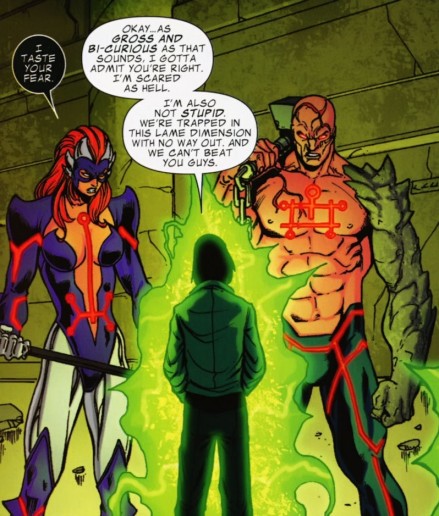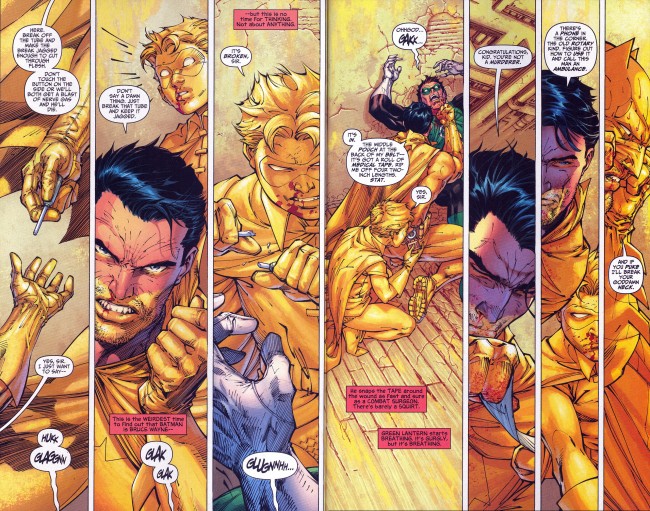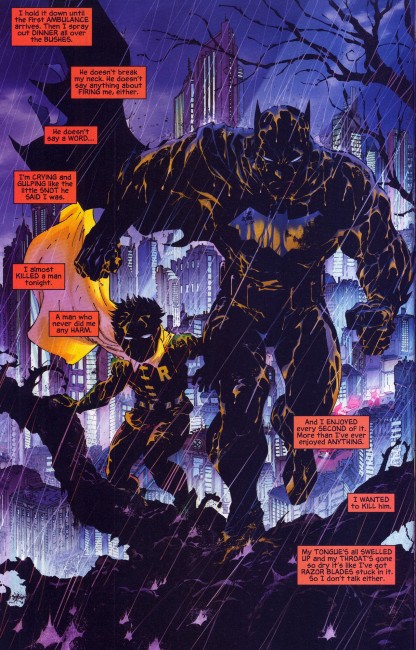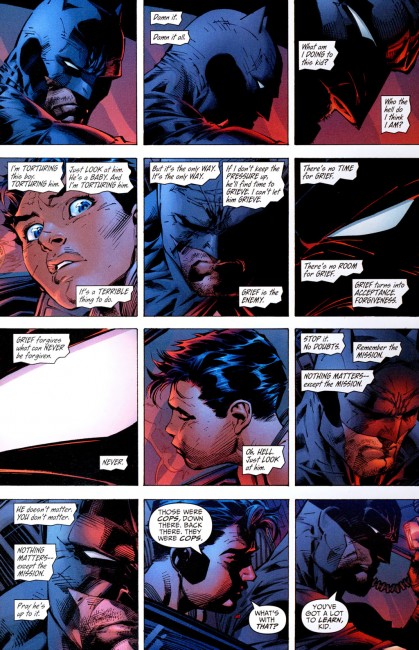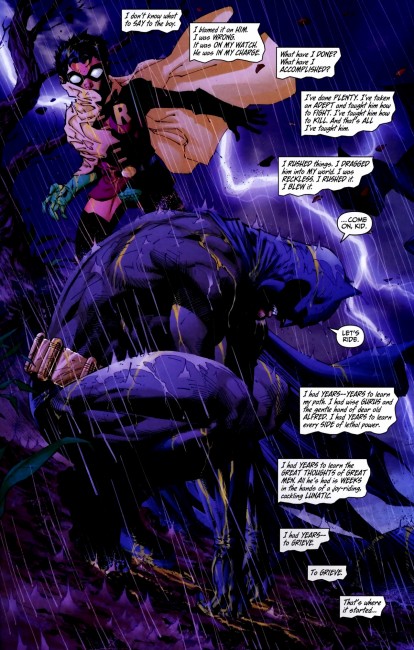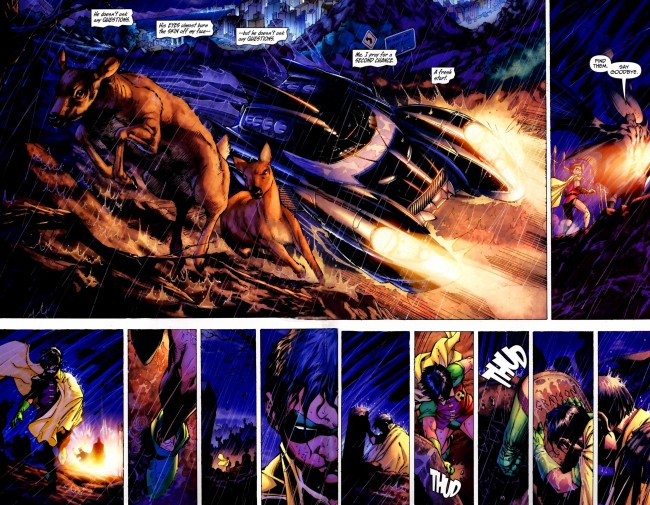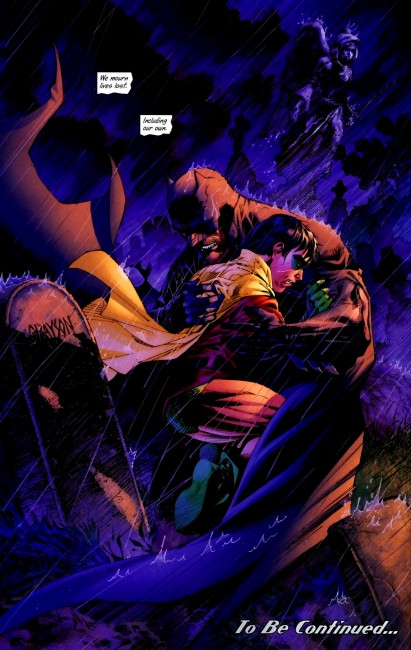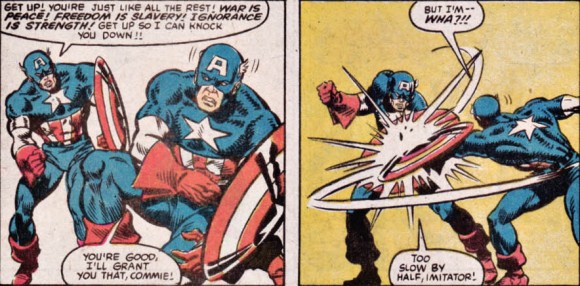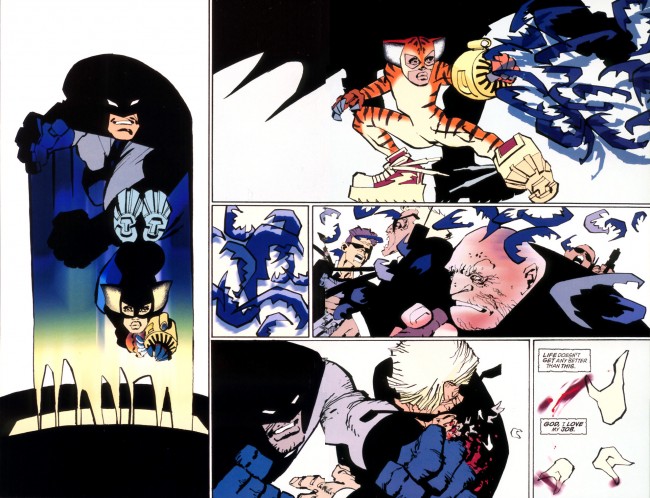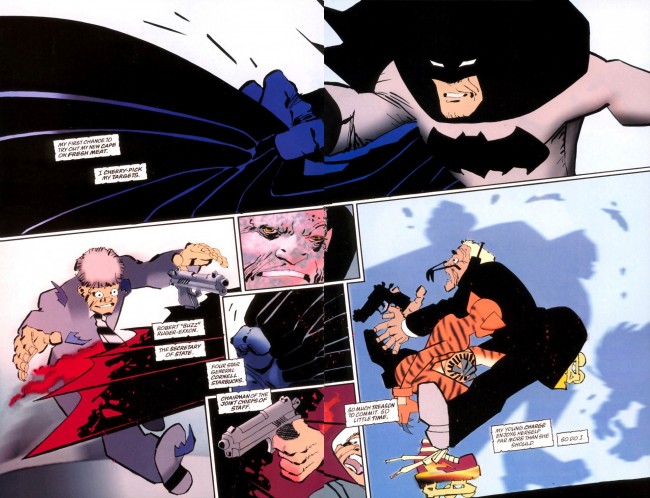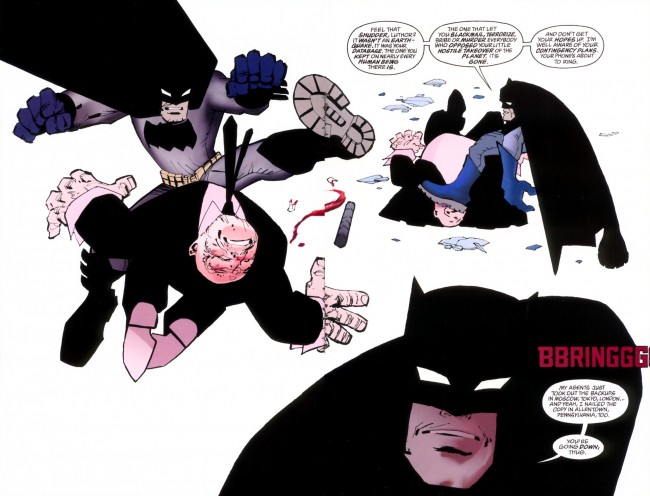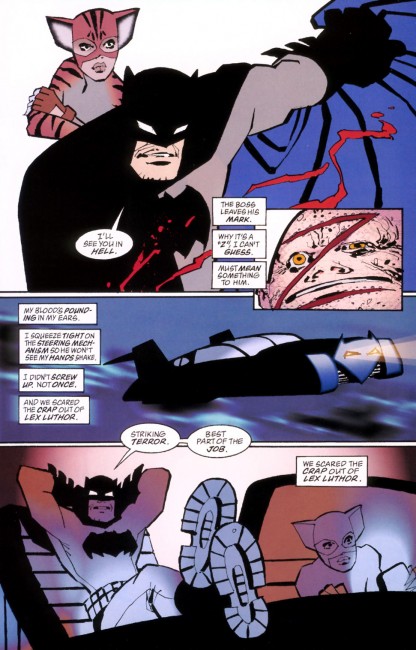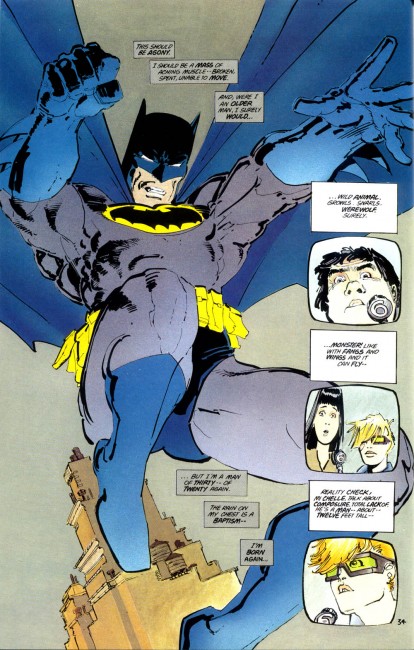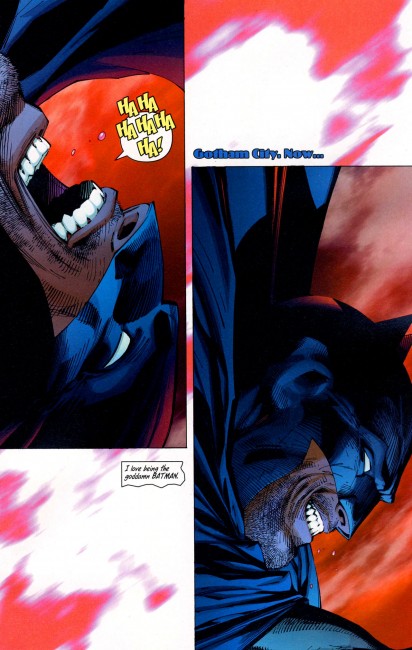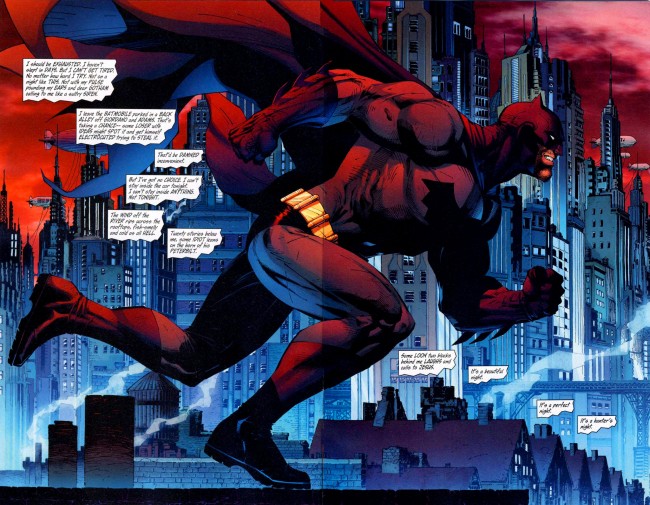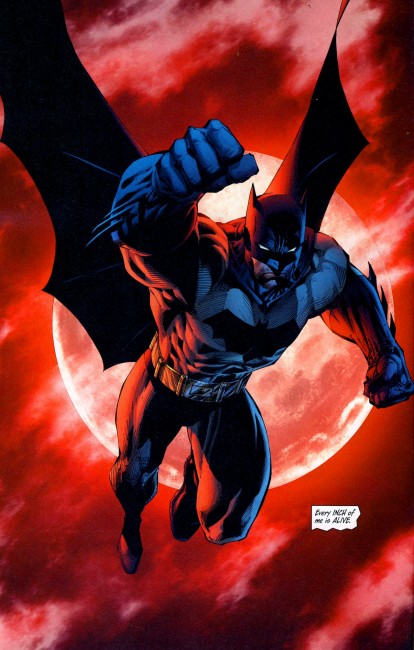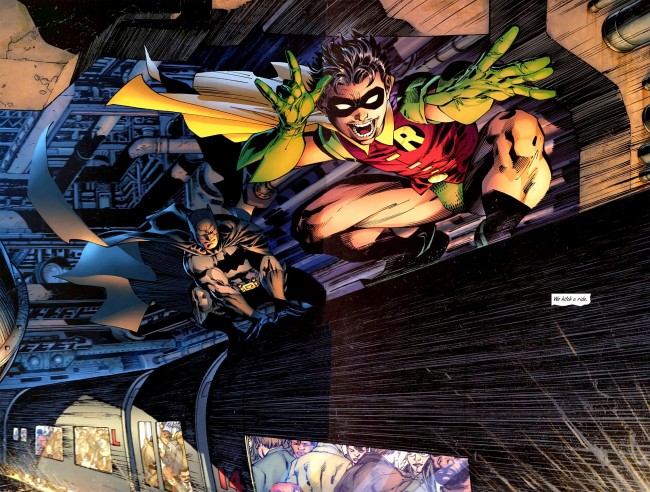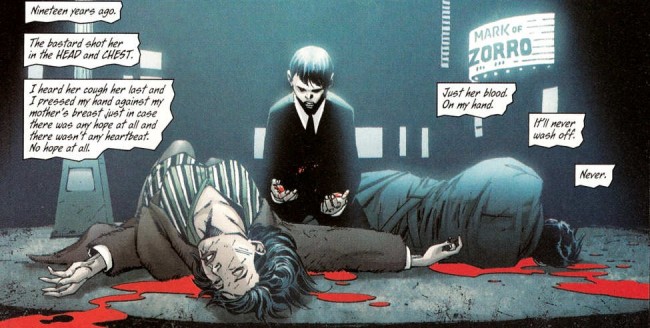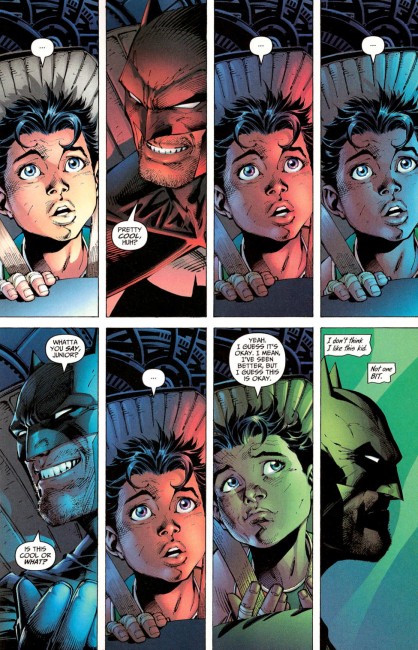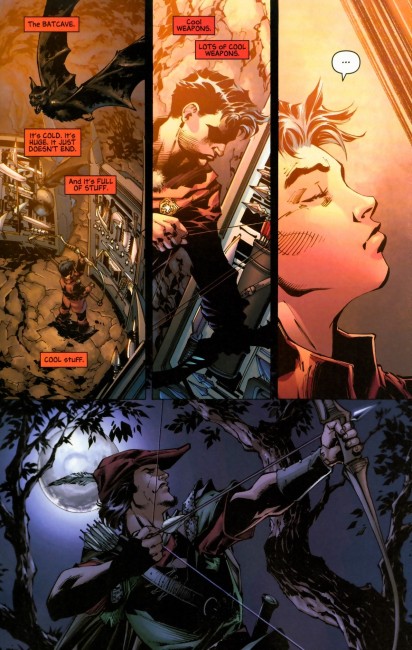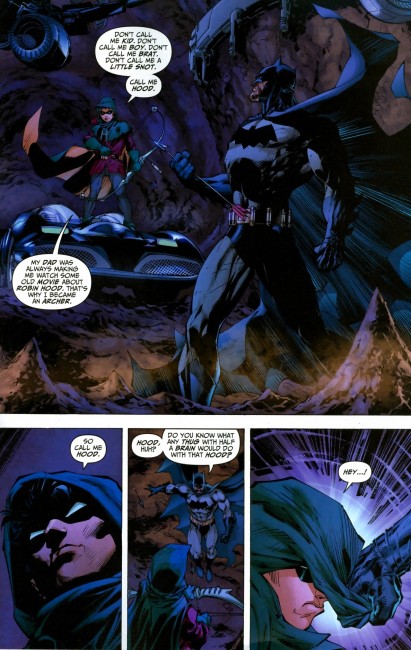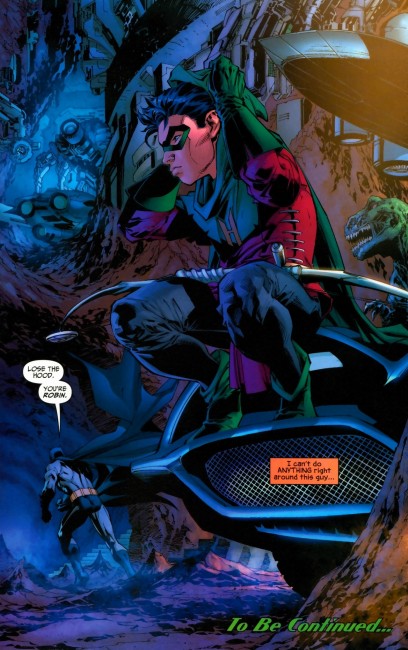Trying to recover from San Diego still, so I haven’t gotten a chance to crank out the big finale. I did want to do this quick hit-type post, though, because as much as I love Frank Miller’s Batman, there’s a whole lot wrong with All-Star Batman and Robin the Boy Wonder. It boils down to pretty much “Miller’s reach exceeded his grasp.” ASBAR, as it currently stands, is too much spread over too many comics. If it were a little tighter, maybe five or six issues, it would be fantastic. At ten issues… well, it’s a little long and maybe too much to love.
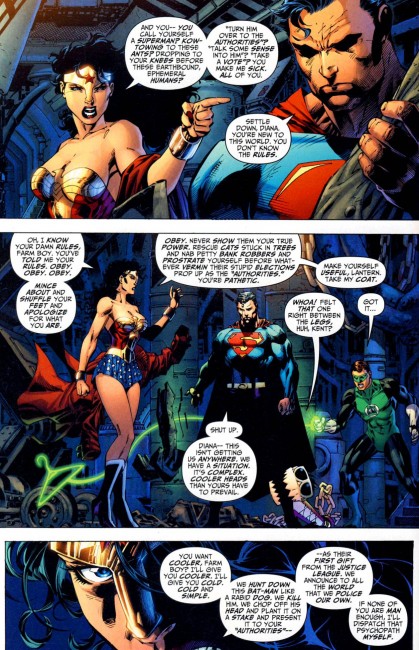
-Wonder Woman–I’m not a particularly huge Wonder Woman fan or anything, but she feels wrong in this book. Miller cranked up the man-hate for some reason, and it poisons the character. It’s surprising to me, because I feel like he did so well with her in Dark Knight Strikes Again:
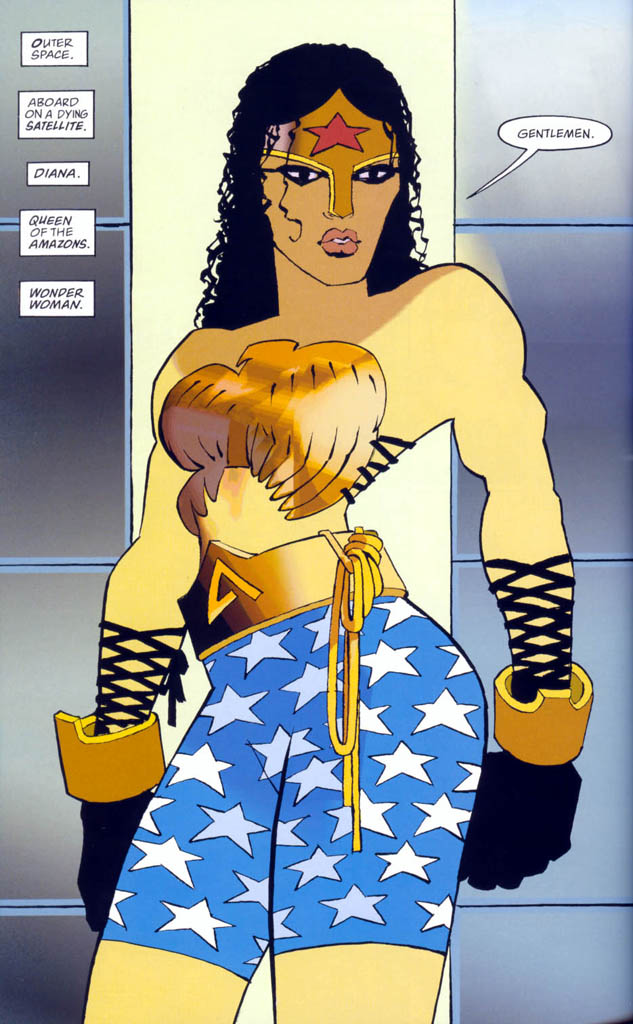
She’s royalty, the next best thing to being a god, and knows it. It makes sense for her to be above the regular folk and a little more willing to get down and dirty when it comes to fighting. She’s a warrior princess, right? She’s not just a regular old superhero. I like that idea, but in ASBAR, it barely even comes across. She seems mean-spirited, rather than pragmatic.
Man, on reading this after finishing the post, do you know what it is? She has no regal poise in ASBAR like she does in DKSA. She’s super-human in DKSA, but still clearly loves people and her friends. She’s too raw in ASBAR. She’s abrasive, and not in an enthralling, Batman/Wolverine sorta way.
-The first arc is way too long. Issues 1 through 9 serve as the first arc of the book, charting the arrival of Dick Grayson, introduction of Robin, and the initial softening of Batman via grief. And as much as I love the grotesque nature of the series (Geoff Klock’s writing on that subject is essential) with all of its insane foldouts and incredible spectacle, it takes too long to get to the point. It isn’t a strong enough work to pull you along for nine issues, unless (like me) you grew up on both these creators. It’s all stick and very little carrot, all the way up until Batman and Robin cry in the graveyard.
Miller tries to fit in too much. The Justice League stuff is entirely too long for its place in the story. The JL are there to establish Batman as a threat and then decide to do something about it. Shoulda happened off panel, I think, with Green Lantern telling us that the JL is worried. Later, because you know it’s coming, the JL could show up as a surprise or something at the end of an issue. A real “oh snap” moment for the series, rather than the meandering introduction of the League that we got.
-The car chase is great, but again: too long. I love its grotesque nature, but hate how it screws with the pace of the book.
-If the first arc had been–I dunno–five or six issues with a lot of the fat trimmed off, it would’ve been much, much stronger. It wasn’t, though, and while I enjoy it, I enjoy it in a way that’s specifically about my trust for Miller and Lee’s work, rather than anything purely rational. Sabes?
-Miller’s Joker is brilliant. A Joker who doesn’t tell jokes early in his career revitalized the character for me at a point where about all I had for the idea was scorn. It made him evil and creepy in a way I could appreciate. Miller does good crazy/evil, too–“I love her only when she cries” is SO good, and when Joker switches from “her” to “it” is chilling. His Joker is good, and probably the best up until the point that Morrison introduced Joker as Oberon Sexton. I like it a lot.
He also shows up too early. We get five strong pages of him as an introduction, but if he’d been pushed to a second arc, it would’ve been stronger and not interfered with the story quite so much.
-Black Canary gets half of the third issue to herself. This is story bloat. We don’t need to know that much about her, but I guess Miller wanted to establish this version as being his own or whatever whatever. I wasn’t particularly fond of it, though I like his Canary, but this just feels like padding. She’s incidental, I assume, and while her hijinx are interesting and violent, that’s just not enough to justify the expense.
-Vicki Vale? I don’t care. I get it, but I don’t care. The Jimmy Olsen bit was cute, but I don’t care. I keep forgetting that she wasn’t just in the Michael Keaton movie, even. Who cares?
-Jim Lee is both the perfect choice and an odd choice of artist. He’s the definitive superhero artist in our post-Kirby world, doubly so now that he’s top dawg at DC, and as a result, this story is lent a level of seriousness (and… not grandeur. I’m tired and blanking, so let’s just roll with seriousness) that it doesn’t exactly require. That seriousness makes the story and art work against each other. You expect one story due to the art, but you’re getting a different one. I would’ve loved to see Miller draw this, because he can draw gleeful superheroics like most people can’t, but that would’ve marginalized the book as being off in Miller’s little world. It’s a tough row to hoe, and I don’t honestly know whether or not they should’ve gone with Miller instead of Lee. It definitely screwed with the perception of the book, and I’m saying that as a guy who likes both artists.
-A little editing would have really gone a long way. Again: he’s trying to do too much and the series suffers. Stronger editing was definitely needed. Drop some scenes, compress others and it would have been better, at least in terms of technique. I like the grotesque, sprawling, hot mess of a comic that it is as published, but man. I hate liking a book and having caveats, you know?
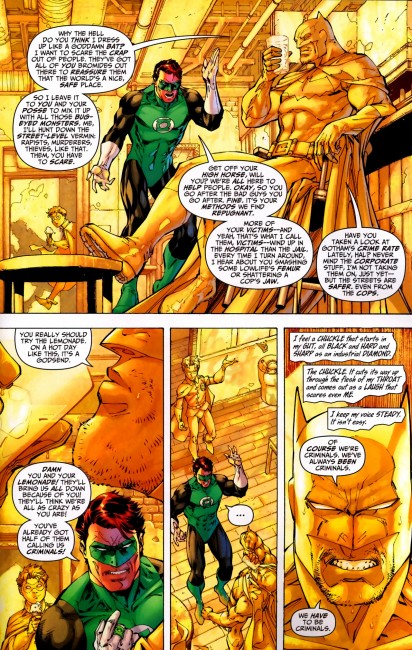
-With all that said, All-Star Batman and Robin the Boy Wonder #9 is about as fun of a cape comic as you’ll ever see, and probably my favorite single issue of a DC Comic. Top five, at the very least. Maybe top three. The way it takes on the absurdity of superheroes, Batman’s respect for the cowl, Batman’s insults, “Care for a glass of lemonade?”, “we have to be criminals,” “What a rube,” Robin reading Yellow Kid, and that moment where everything flips upside down… it’s good.
It’s what the series should have been the whole time. It’s got the comedy, action, and melancholy sadness that I expect from cape comics. It makes Hal Jordan look stupid, but who cares about that guy. Miller is a funny guy. He could do (has done) some real mean and funny comics. Ever read Tales to Offend? I like that comic. Some of that same sense of humor bleeds through to ASBAR #9.
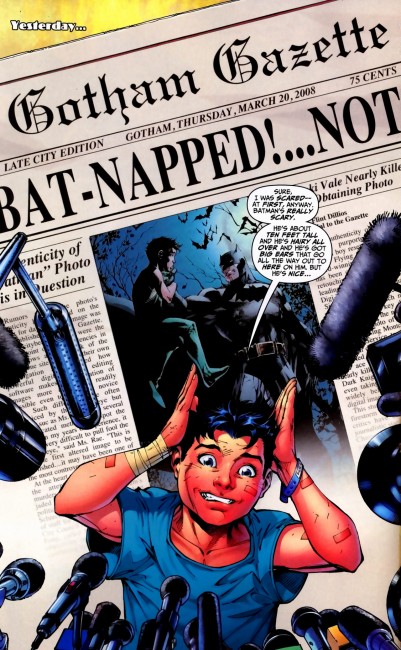
But yeah. We’re gonna get to that issue. Please believe it.






